
It is a gray winter day in Jurassic England as the great reptile patrols the forest’s edge. The hunter’s stride seems sluggish at a glance – indeed, the weather is unusually cold this year, and most normal reptiles would have succumbed to the dismal temperatures already. The great hunter is no normal reptile, however. With his erect, bipedal posture, the hunter is one of the many fearfully great order of species currently dominating the globe. His motions look slow, but his eyes are keen; his tall, musculature form is ready at a moment’s notice to burst into action and run down any would-be prey. So far, however, the woods are quiet. The air is still, save for the intermittent wind through the trees. For now, the hunter continues his patient quest like any other day. The beast will never know how, 166 million years after his passing, the discovery of bones from his kin will rock the intellectual world of another, very different world-dominating predator.
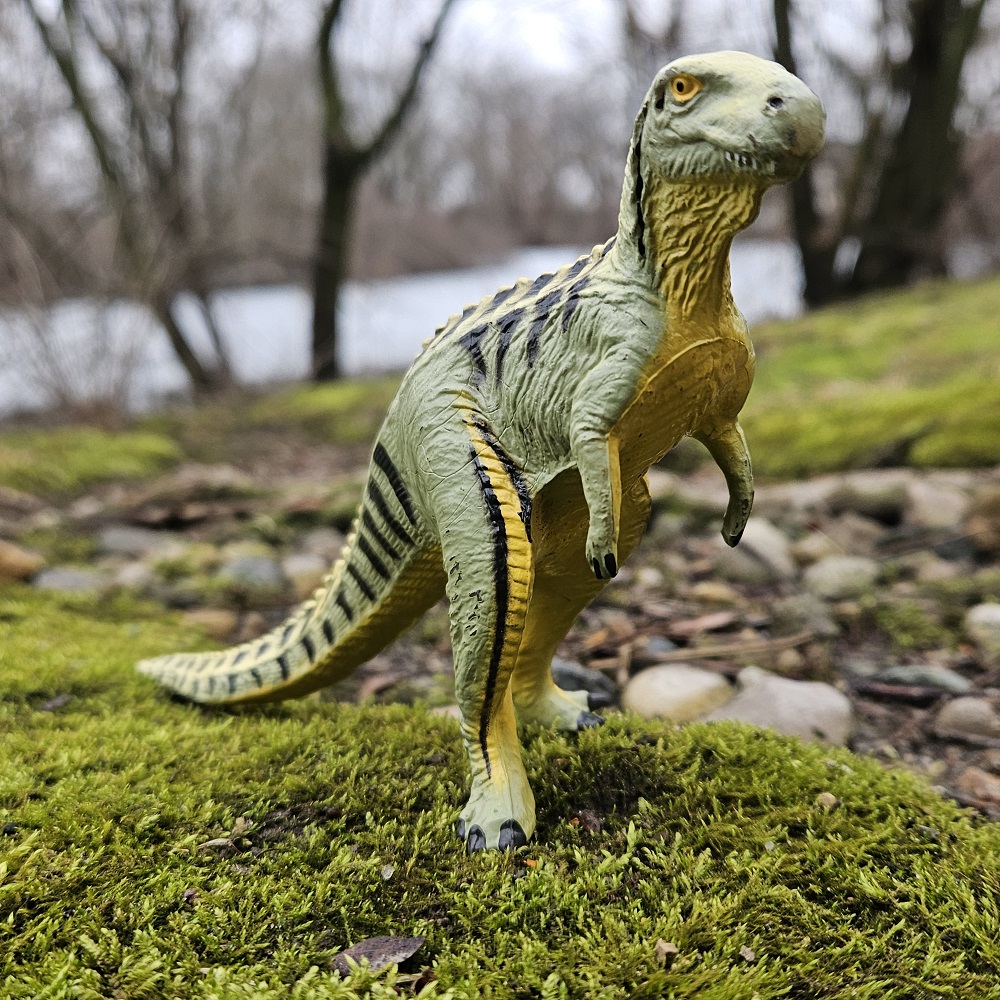
On this day, the 20th of February, 2024, a quiet but monumental moment in paleontological history takes place: the 200th anniversary marking of Megalosaurus, the first (non-avian) dinosaur ever discovered, being officially announced to the scientific world. Long before the pop-culture sensations of Jurassic Park, King Kong, or even Sinclair Oil’s “Dino” mascot – before the likes of Brontosaurus and Velociraptor became household animal names – the earliest foundations of our undying fascination with the group of reptiles that would be coined the dinosauria were laid in 1824, when Professor William Buckland revealed Megalosaurus at the annual meeting for the Geological Society of London. That same meeting also saw the announcement of the marine reptile Plesiosaurus; but it was Buckland’s “great reptile” that was destined to pave the greater road to fame.
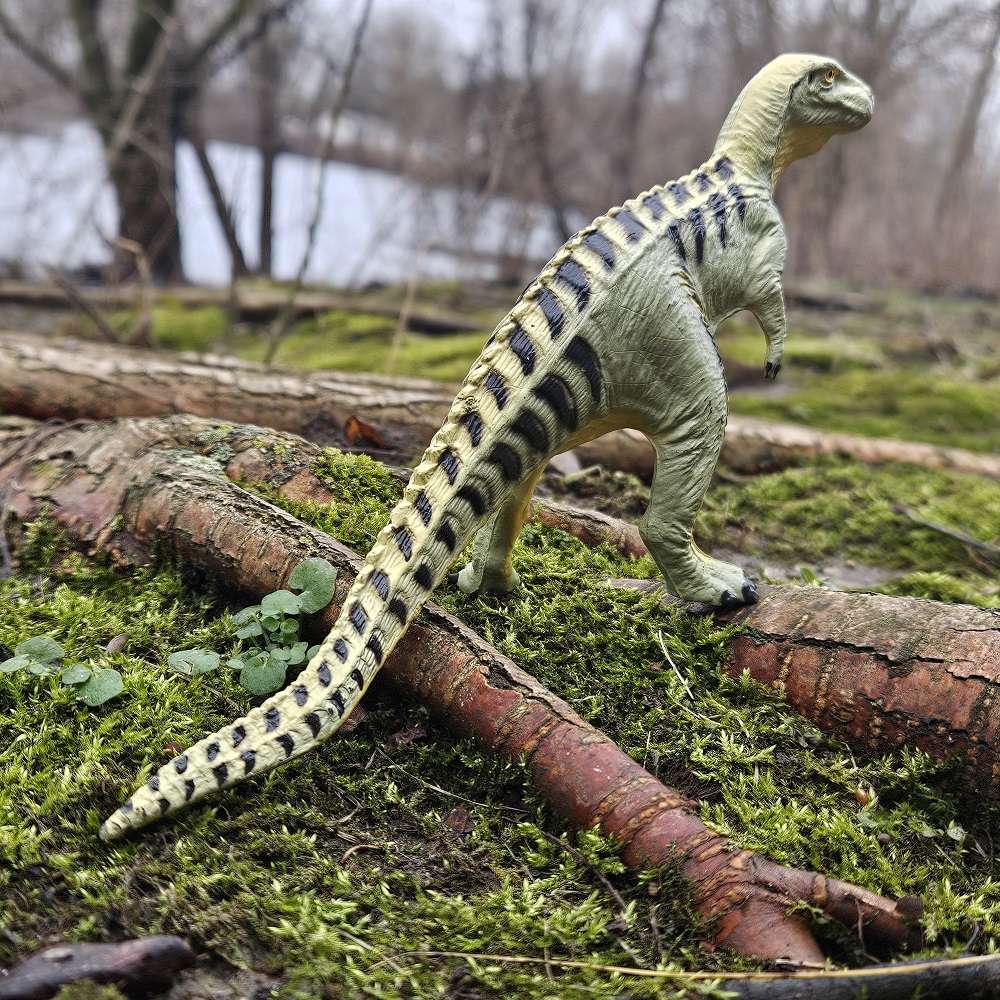
It turns out 2024 is a stacked year for Megalosaurus anniversaries. In addition to commemorating its naming in February, Megalosaurus will celebrate 170 years in the month of June since the dinosaur’s first life-size replica being put on display, alongside numerous other dinosaurs and prehistoric creatures as part of the opening for London’s Crystal Palace Park project. The Park’s opening in 1854 was even promoted with the production of what were surely the first-ever “collectible” models of prehistoric animals: a series of plaster models representing Megalosaurus and five other animals featured in the Crystal Palace exhibit. It would take over a century before the next mass-produced toy Megalosaurus would be released to the world, when the company Invicta Plastic began what is now a famous line of model dinosaurs in collaboration with the British Museum of Natural History. These figures were released from 1973 onward and remained in distribution over a couple of decades. Coincidentally, Invicta’s Megalosaurus, one of the first in the series, was released in 1974 – marking yet another anniversary date for this special dinosaur in the same year.




We’ve had 50 years of Invicta dinosaurs, 100+ years of dinosaur exhibits and models, and 200 years of dinosaur discoveries – with Megalosaurus present throughout it all, from the very start. Wow! Megalosaurus has certainly earned its time in the spotlight. Given all these remarkable anniversaries, I felt it only fitting to pay tribute in my own small way with my 100th review for the Dinosaur toy Blog. As it happens, time and chance recently granted me the opportunity to acquire Invicta’s painted Megalosaurus figurine for myself. The Invicta dinosaurs have all been covered on the Dinosaur Toy Blog already, Megalosaurus included; but that version of the model was the original monochrome release. During the 1980s, Invicta decided to try upping their game with new, painted variants of their existing models – possibly to match their newfound competition in Safari Ltd’s seminal Carnegie Collection. For this review, therefore, I am looking at Invicta’s second release of Megalosaurus, revised in a spiffy new coat of paint to catch kids’ and collectors’ eyes anew. Let’s take a fresh look at this classic model in the year of the Megalosaur 2024.


–
Invicta’s dinosaur series was significant because it heralded a change in the industry: a transition towards larger, more elaborate figurines that could be regarded as authentic scientific replicas, not just simple playthings. Certain advertisements even doubled down on this selling point, explicitly claiming to readers that “these are not toys”. They were toys, of course; but Invicta’s products were more ambitious than their predecessors like Marx and MPC. The standard Invicta set paved the way for the likes of Safari Ltd, Battat, Bullyland, Eofauna, PNSO, and many more brands who have striven to create high-quality, scientifically-accurate figurines representing prehistoric life.
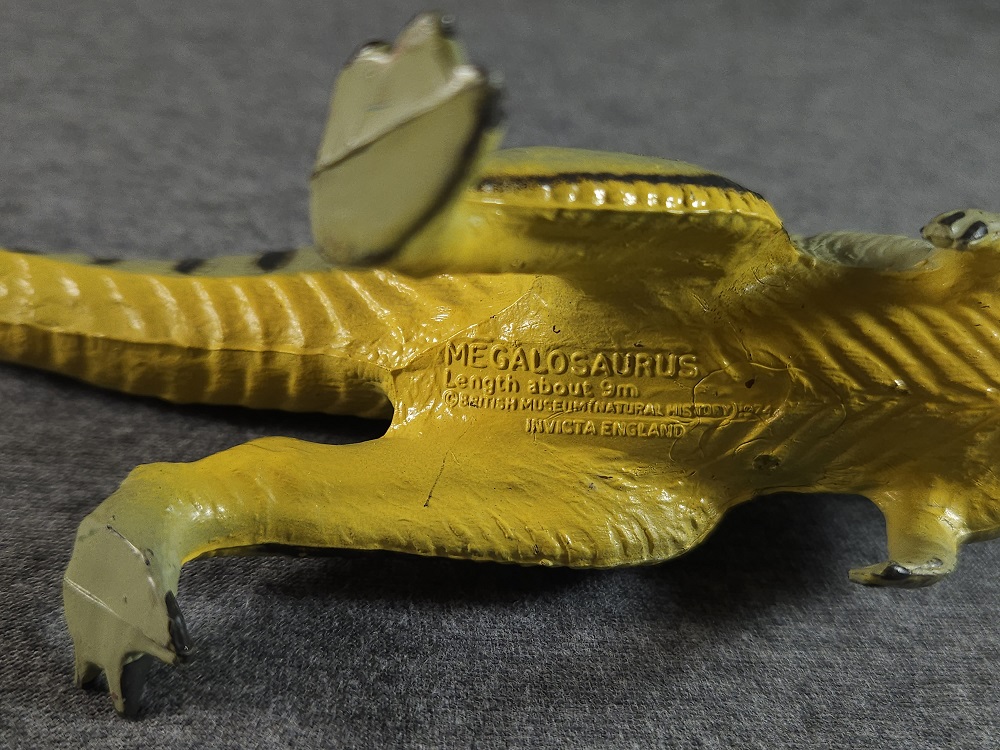
With a life-size estimate of 9 meters (30 feet) long engraved on the figure’s stomach, Megalosaurus was originally advertised by Invicta as being 1/45 scale. Measuring 20 cm (8 in) long along the spinal curve from nose to tail, the figure fits the advertised scale perfectly. Modern size estimates place the animal closer to 6 meters, but the figure also fits snugly into 1/30 scale for that estimate. Since Megalosaurus was – and still is – known from such scant remains, Invicta’s model was likely designed with reference material from better-known theropods like Allosaurus and Tyrannosaurus. Of course, the figure also bears some old-fashioned, stereotypical reptilian qualities as well; but the figurine carries these features with relative style, plus a few more progressive touches.
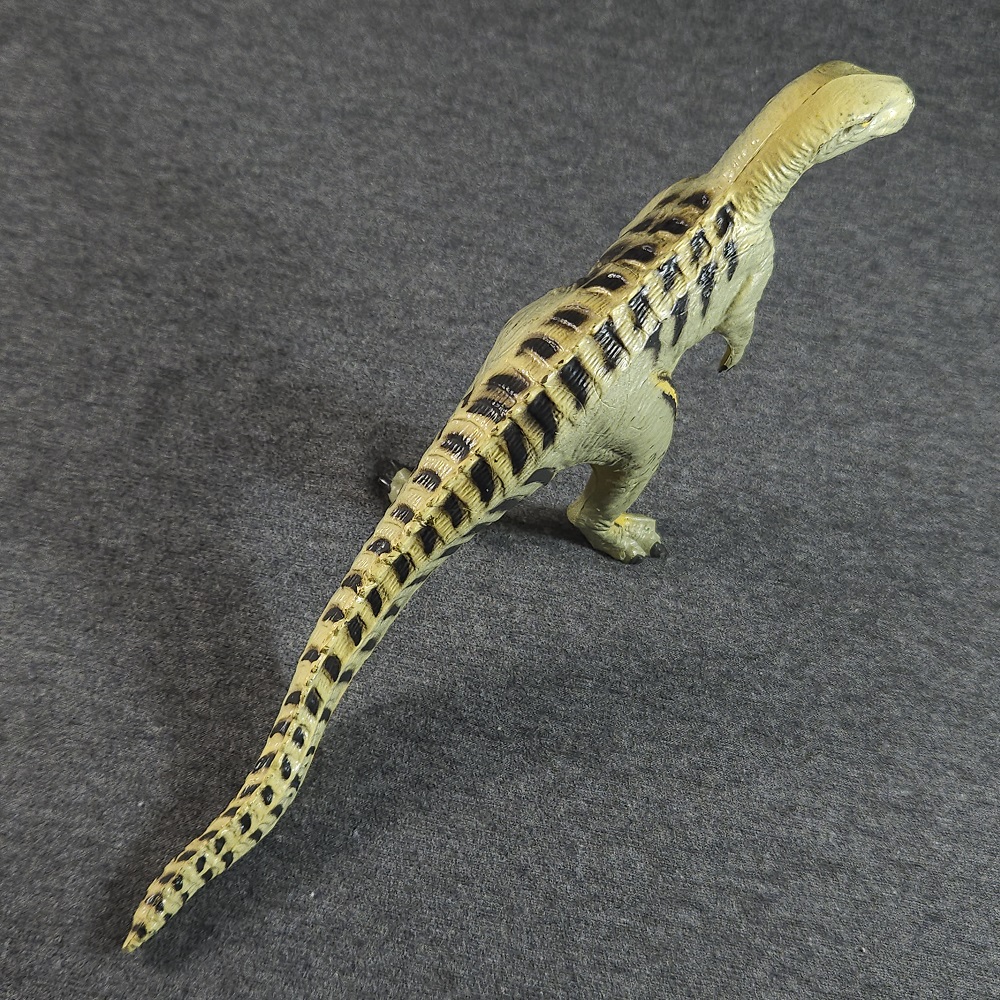
The figurine is posed with legs apart, right foot slightly raised in step in a slow stride. The arms hang casually but not limply; amusingly, the hands, though small, are positioned palms inward, avoiding the anatomically unfeasible pronated pose that so many toys continue emulating even today. The feet of the figure are splayed outward in an odd lizard-like fashion I’m not used to seeing, even on older toys. The belly, however, is much more trim than one might see depicted in theropod art up to that point; the legs are long and limber enough to keep the body raised high above the ground. The animal’s posture is angled at a slope of about 30 degrees, with the last third of the tail dragging on the ground by default. The head is raised in stern vigilance, emphasizing the animal’s height and giving an imposing air to the figure when viewed from the front.
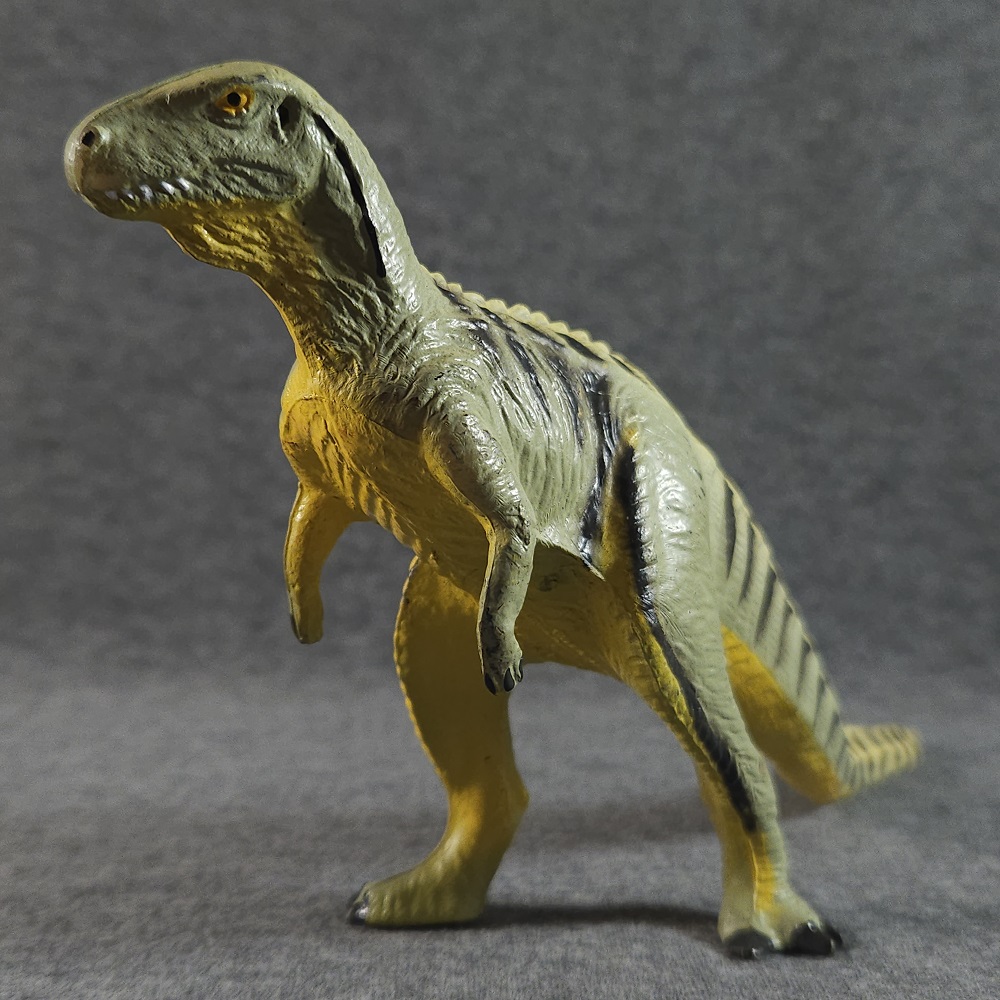
The skull is a little small and boxy, with a flattened top to the skull. The eyes are set more deeply in the skull than the average lizard, however. The earholes, set closely behind the eyes and of similar size, are still reminiscent of a lizard. The prominent brow ridge gives the animal a stern glare, similar to a tegu lizard or Savannah monitor – better yet, a hawk or eagle. The shape of the skull isn’t particularly defined, but the snout is reasonably deep, and it does somewhat resemble the oblong/rectangular shape associated with megalosaurids today. The throat features a dewlap, which is entirely speculative but still well within reasonable features by today’s reconstruction standards. Most of the body lacks visible scales, opting for a more mammalian texture of wrinkled skin; later Invicta dinosaurs would improve on this trait. Megalosaurus does, however, feature a large row of double-sided scutes running from the base of the neck all the way down the tail, where it spreads into multi-sided armor encasing the entire tail. A twin row of large mirrored scales also protects the animal’s stomach crocodile-style. This figure perfectly captures the twilight years of the Victorian-style dinosaur designs, as if burdened by the weight of old preconceptions but poised ready to shed its hide in a renaissance-style transformation.
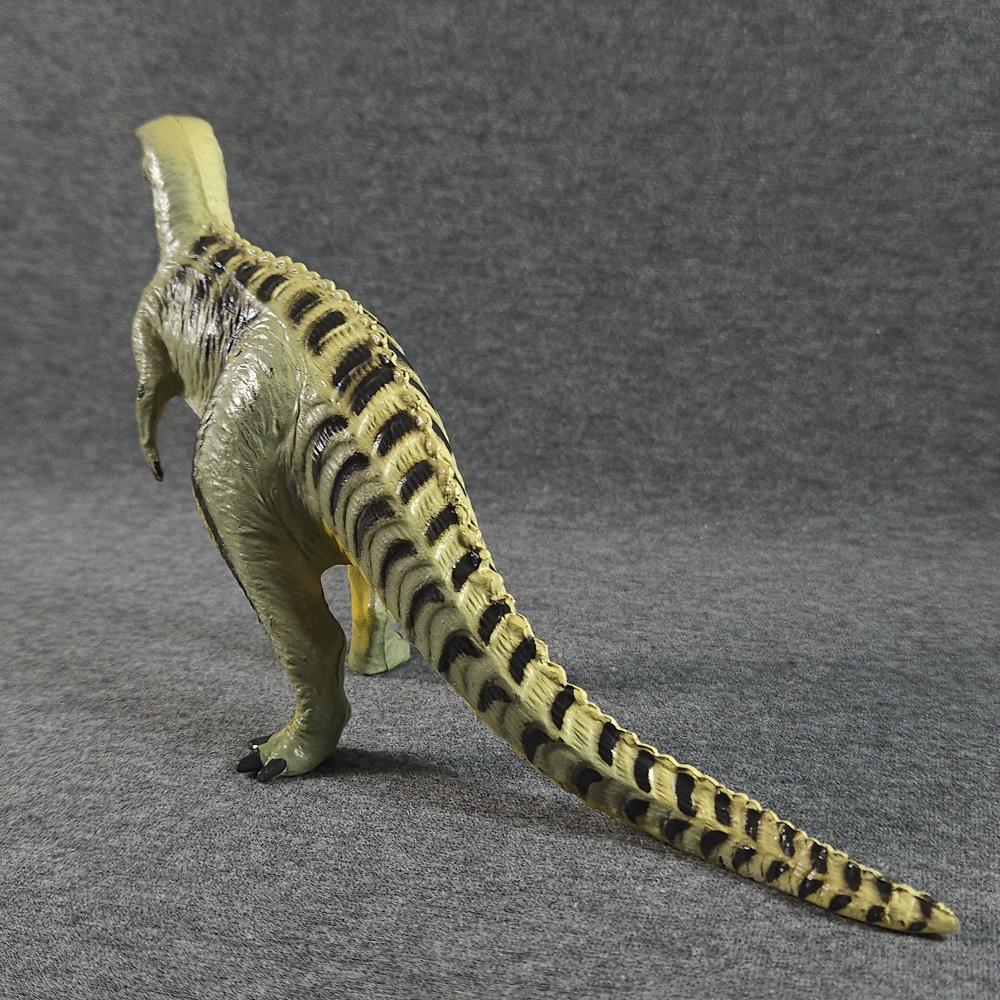
Aficionados of classic dinosaur media might notice that Invicta’s model does not look anything like the Neave Parker illustration which became Megalosaurus’s De Facto image during the 1960s – instead, the model bears a striking similarity to the titular theropod in The Valley of Gwangi (1969), animated by the legendary effects artist Ray Harryhausen. This resemblance is more than a coincidence; the dinosaur models for The Valley of Gwangi (as well as 1962’s One Million Years BC) were designed not by Harryhausen alone, but in collaboration with Arthur George Hayward, who was head of the model making and sculpting department at the British Museum of Natural History – the same museum that commissioned Invicta for the toy line in the 1970s. Hayward has been cited many times in the past as the sculptor of many figurines in the Invicta line, which lines up reasonably with the timeline of Hayward’s employment for the Museum. One can certainly see the master artist’s signature style in the Megalosaurus, as well as other models in the line. Invicta’s Megalosaurus truly carries a larger-than-life iconography of paleoart and media in its modest plastic frame.
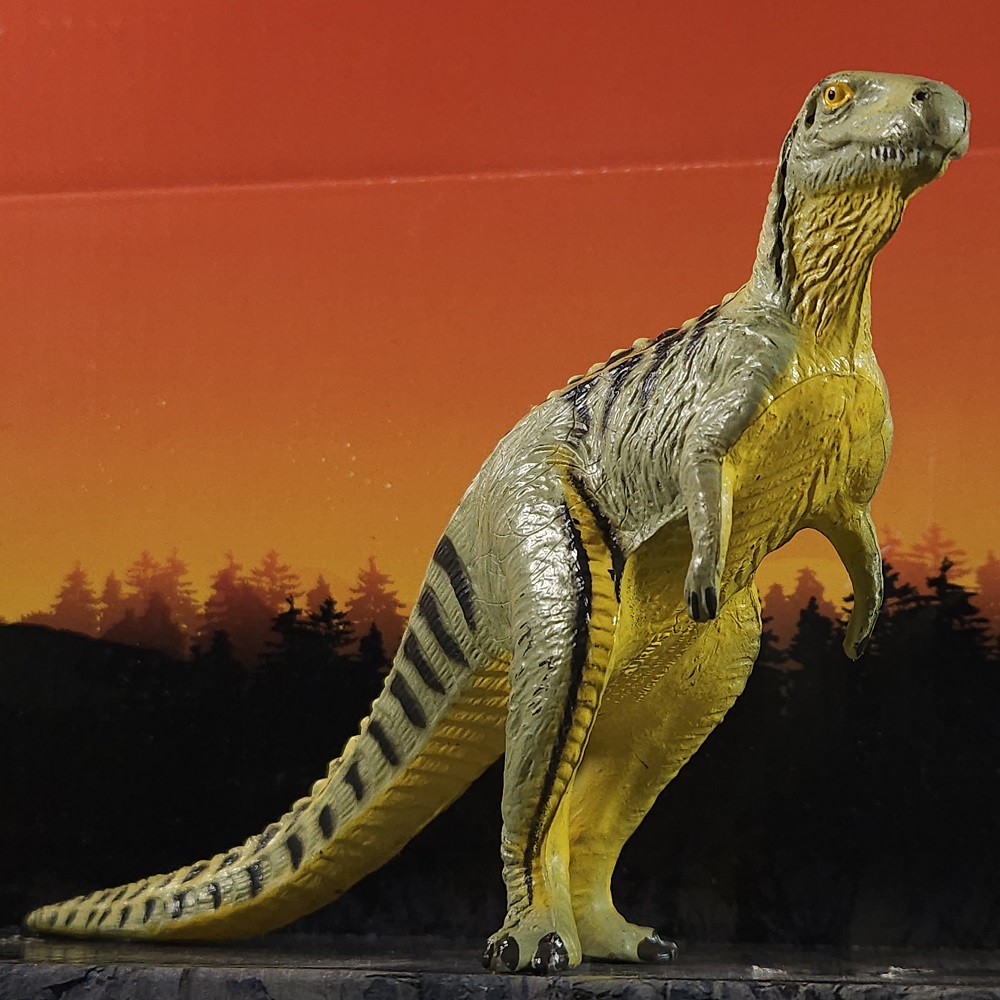
Originally, Invicta’s dinosaurs were molded in hard, monochrome PVC; different models received differently-colored plastic, with Megalosaurus being produced in a dark forest-green. For the painted reissues, Invicta switched to a softer plastic, similar in pliability to the early Safari Ltd. and Battat figures which had become Invicta’s new contemporaries (whether that particular detail is anything beyond sheer coincidence, one can only imagine). The softer plastic might have been more child-friendly in purpose, softening any pointy edges to the toy; thankfully the sculpt details didn’t obviously suffer, although one must be a little more careful about the figure’s balance. If one were so bold to remove the paint off of an Invicta, the plastic underneath would appear translucent, almost resembling the look of blown glass.
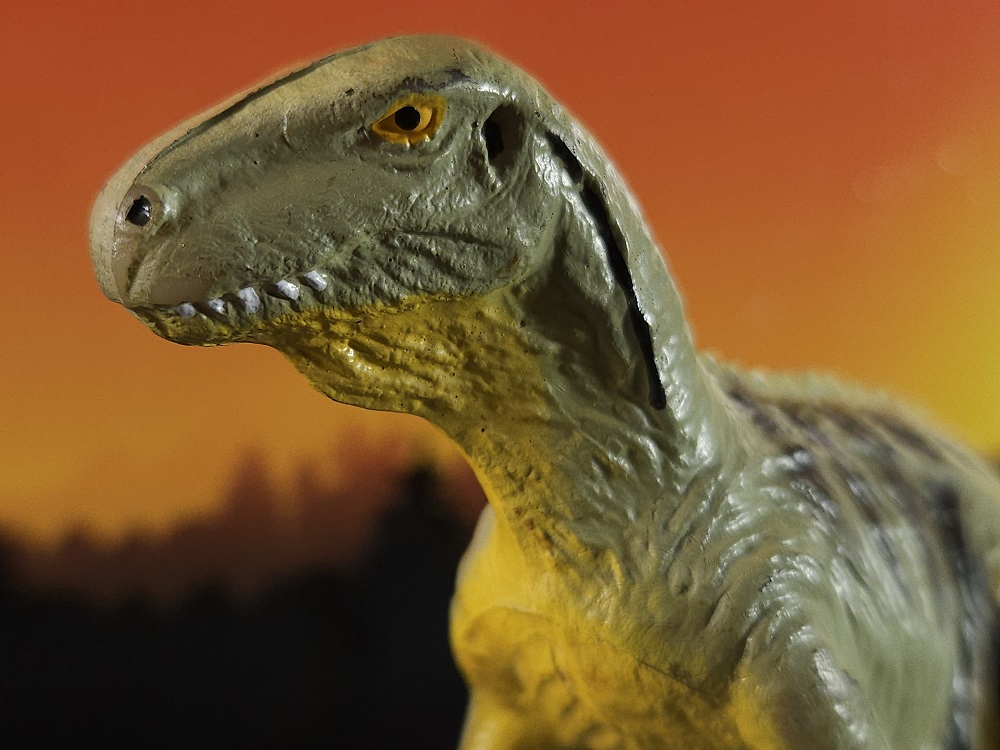
Of course, we don’t want to do such a horrible thing as stripping the toy of its paint, now do we? Invicta’s painted Megalosaurus looks quaint in paint application compared to the “museum-line” models produced today; but in the 1980s this was relatively new ground. Megalosaurus trades the dark green of the woods for a lighter, keylime hue, the underbelly a bright margarine yellow that runs up the arms and legs as well. A similar yellow spray is applied to the back, with black perpendicular striping running down the scutes, broken and shaped to match the scale patterns like decorator icing. Delicious! Alright, so that’s probably not what Invicta had in mind. Additional details include individually-painted white teeth, glaring yellow eyes (albeit sloppily painted, making the eyes look bigger than they are), dark grey nostrils and earholes, black counter-stripes to the neck and legs, and distinct fingers and toes. Some details are rougher than others, but the overall effect is a much more colorful and lively image of a dinosaur than previously seen in media. Invicta was taking Safari’s/Carnegie’s innovations to heart, even if it was more fanciful than plausible in result.

The exact dates of release for Invicta’s painted figurines don’t seem to be well-documented, beyond spanning the mid-to-late 1980s – but a legacy of what is now centuries of science and pop culture rides on the back of Megalosaurus and its painted plastic kin. This is not a unique legacy, per se, as every new iteration of paleoart and merchandise continues the life of prehistory in our consciousnesses; but Invicta’s Museum figure line occupies a special place in that history, when approaches to traditional paleontology and its perceptions were hitting a major transition, and the imagery of the dinosaur age was being reborn like never before. The Megalosaurus is, admittedly, a relic mostly of what was getting left behind; but it’s a relic with charm and beauty and promise, heralding greater things to come even as it minded its own business waiting to be sold in museum shelves and catalog pages. I must admit, the Megalosaurus is one of my personal favorites from the line, so I might be waxing eloquent. Nevertheless, I highly recommend this figure to any dinosaur enthusiast who appreciates all it once, and still does, represent in dino media history. The Invicta line has been retired for some time now, so hunting down the painted models for a reasonable price can be a challenge – but I assure readers it’s worth the effort.
…And a happy 200th birthday, you great reptile, you!
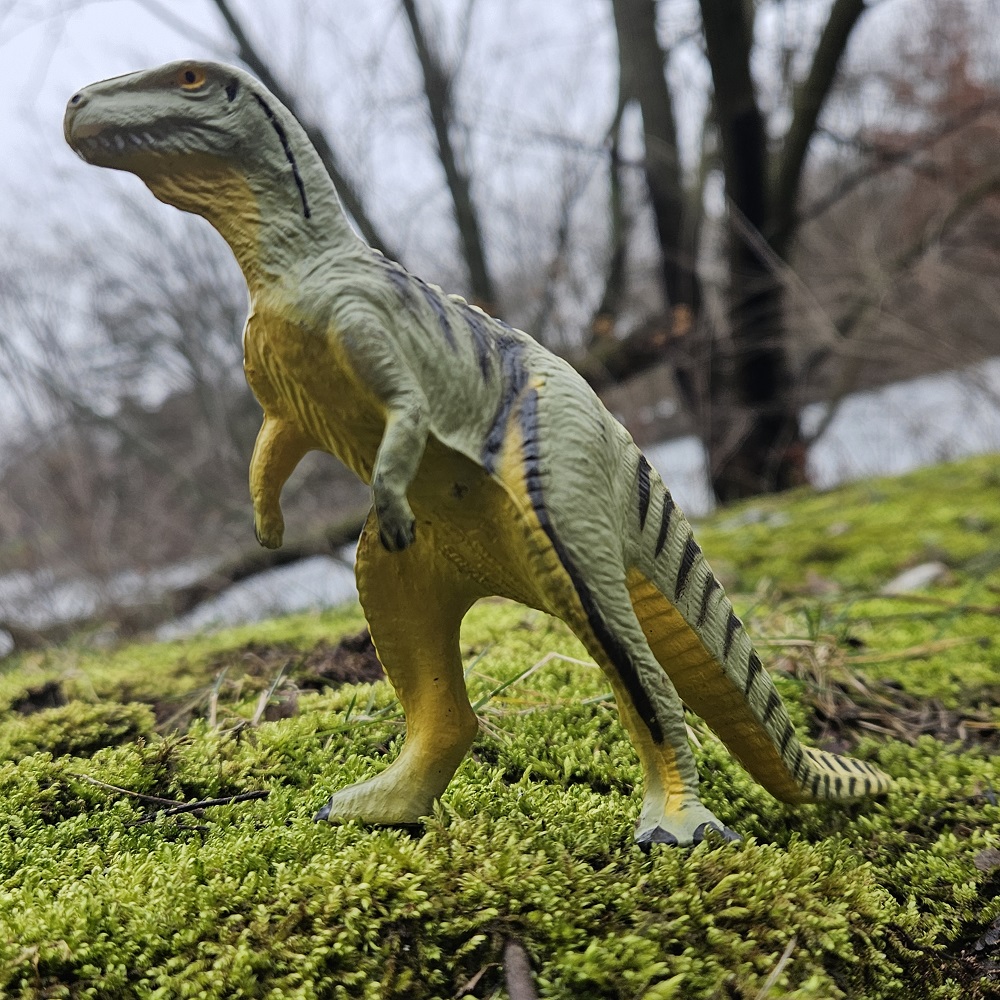
Disclaimer: links to Ebay and Amazon on the DinoToyBlog are affiliate links, so we make a small commission if you use them. Thanks for supporting us!




Most egy évvel ezelőtt esett le,hogy a Mattel Wild Roar Megalosaurusa szintén 2024-es,talán direkt?Ezer bocsánat amiért az előző üzenetemben rosszul gépeltem le a Megalosaurusa nevét.
Every single figure reviewed, no matter what it is of, gets at least one 1-star vote. Usually I shrug it off because I figure it has to be trolls but seeing a classic like this get multiple poor ratings is particularly sad.
Az egyik lejobb cikk amit olvastam,és abszolút a kedvencem az Invicta Megalodon(akármilyen mások az elképzelések).
Thanks for this, Fembrogon! I had the painted Invicta Megalosaurus when I was little and I enjoyed it, but I have no interest in having outdated prehistoric animal models now so I’m very happy to just have the PNSO Megalosaurus, and more so after reading this review. I’m glad you were able to find this Invicta Megalosaurus!
Personally, I think Plesiosaurus has been as important as Megalosaurus, having spurred an interpretation of the Loch Ness monster, being used as evidence to correct the skeleton of Elasmosaurus and of course showing the world that long-necked marine reptiles existed. Plesiosaurus showed a basically complete specimen of something unlike anything else that was known. It’s surprising how few figures Plesiosaurus has received too, considering how long it has been known for and how complete its remains are. I’m happy to have found my perfect Plesiosaurus, the Kaiyodo Dinotales version, so as far as Megalosaurus and Plesiosaurus are concerned, I’ve got figures of them I’m satisfied with!
Without a doubt, Plesiosaurus was also a very important and influential discovery; however I think Megalosaurus ultimately usurped it, if only in being one of the founding genera for the dinosaurs, which Plesiosaurus is STILL mistaken for being part of many times! Both deserve great recognition, though. If only I had the painted Plesiosaur to review too!
@dinotoyblog …to coincide with 200 years since Megalosaurus was named.#Megalosaurus #dinosaurs #dinosaur #paleontology #science #toys
Remote Reply
Original Comment URL
Your Profile
I think that it’s remarkable in itself that there are still Invictas out there waiting to be reviewed. So, thanks @Fembrogon, for this trip into the past of the hobby.
Only painted ones, if I’m not mistaken. We didn’t used to review repaints on the blog so that’s probably why, but that ship sailed long ago. It would be nice to see the rest of the painted Invicta models make there way here.
Yes, I agree with this, I’d be happy to see a review of each of the painted Invictas.
I might be mistaken. Looks like there is a review for the painted Scelidosaurus but not the mono version. Either way, all the figures are here, just not every variant of them.
Every sculpt has indeed been covered; only a couple featured or focused on the painted variants, however. Given how precious the painted versions have been becoming – and how old some of the reviews are – I think pursuing more reviews of the painted versions is a welcome goal. I’ve got a few more myself recently, so who knows…
Fantastic review! I was not expecting this today. I also didn’t realize this year was the 200th anniversary, otherwise I would have timed my PNSO review better. No matter, you did a great job celebrating this day on the blog. Congrats on 100 reviews too!
Happy Birthday Megalosaurus!
Excellent Blog.
So informative especially in reference to The 100 Yrs Anniversaries.
Really enjoyed and am keeping this information and details for further future reading.
Cheers.